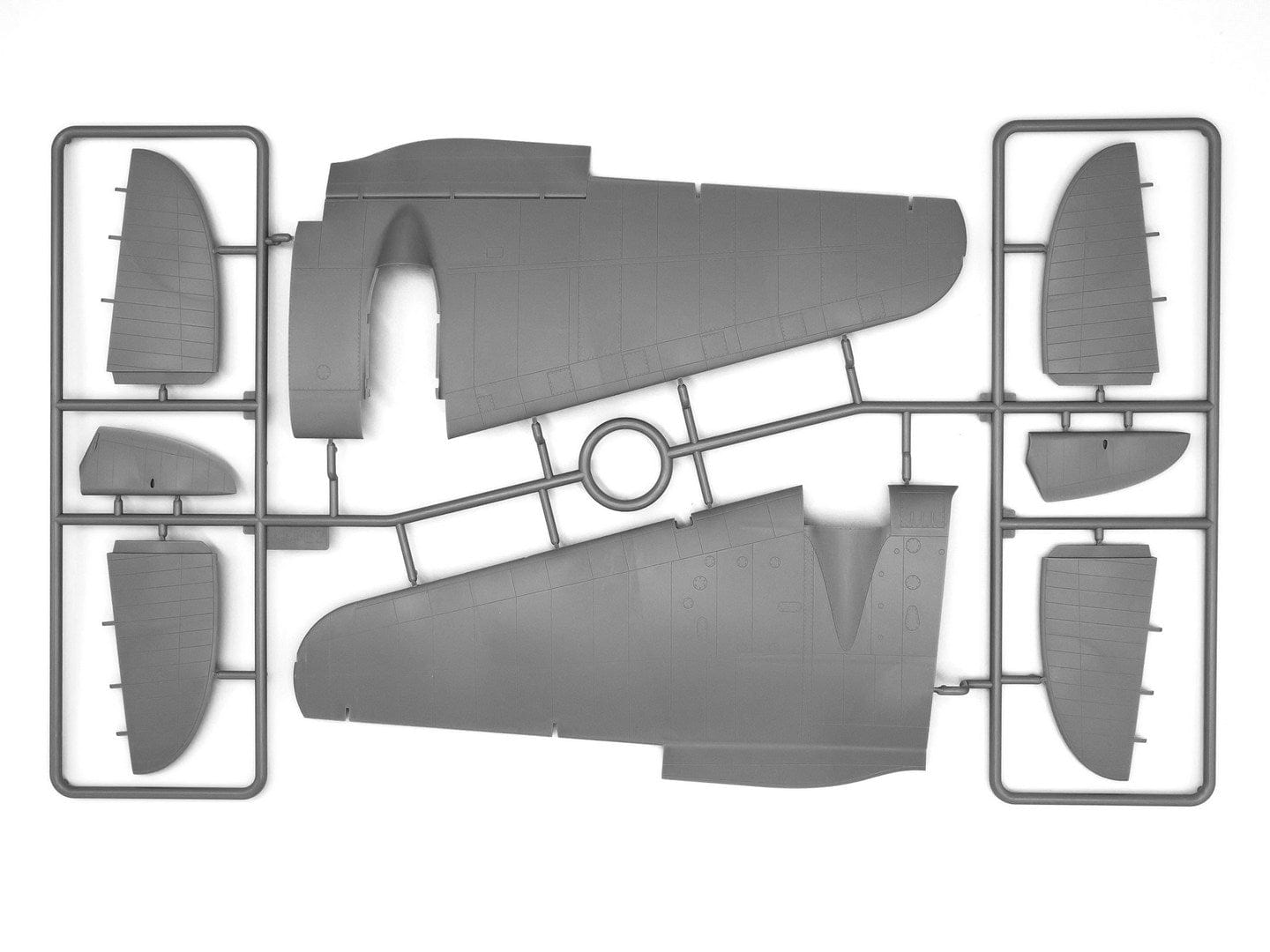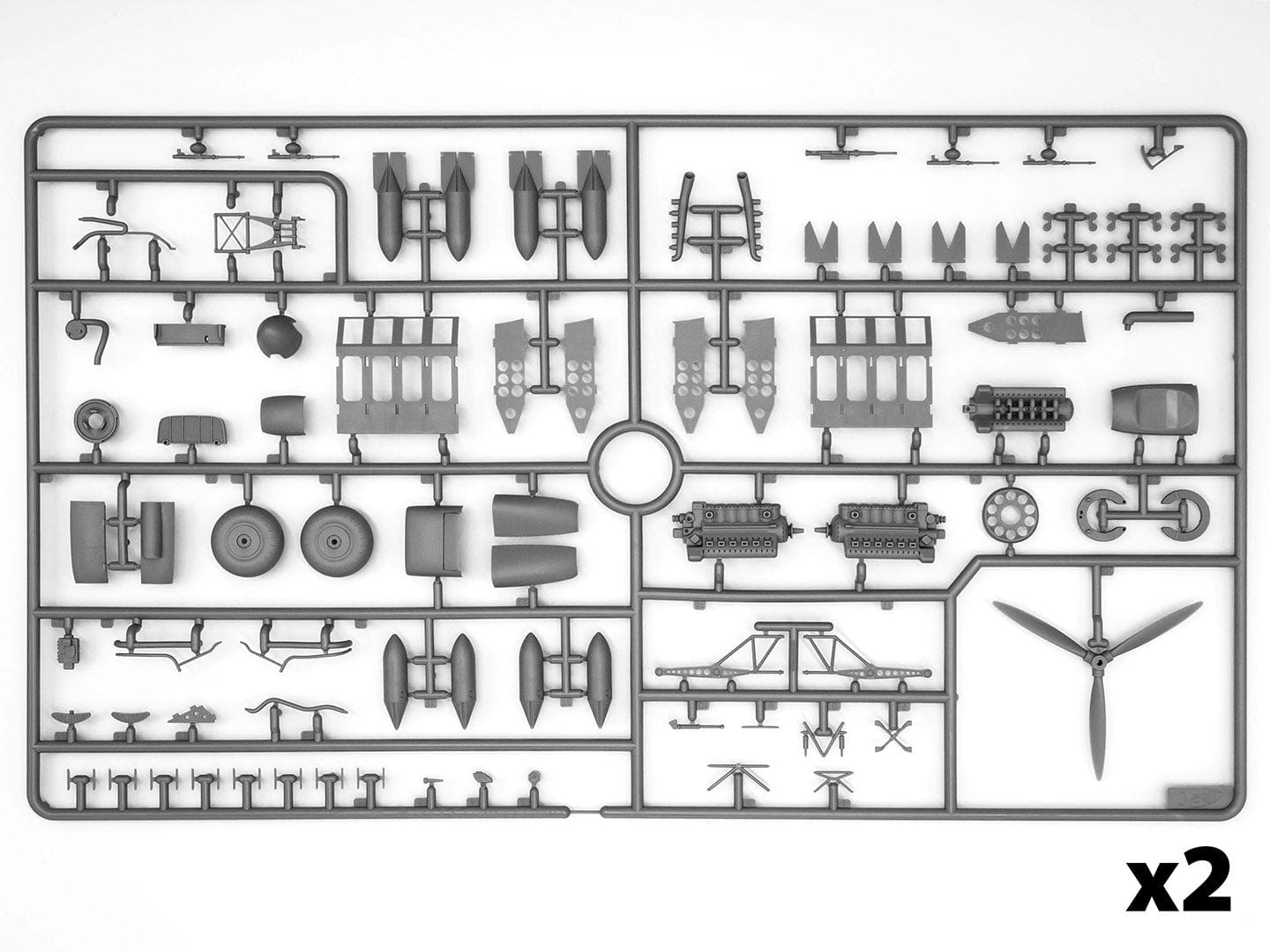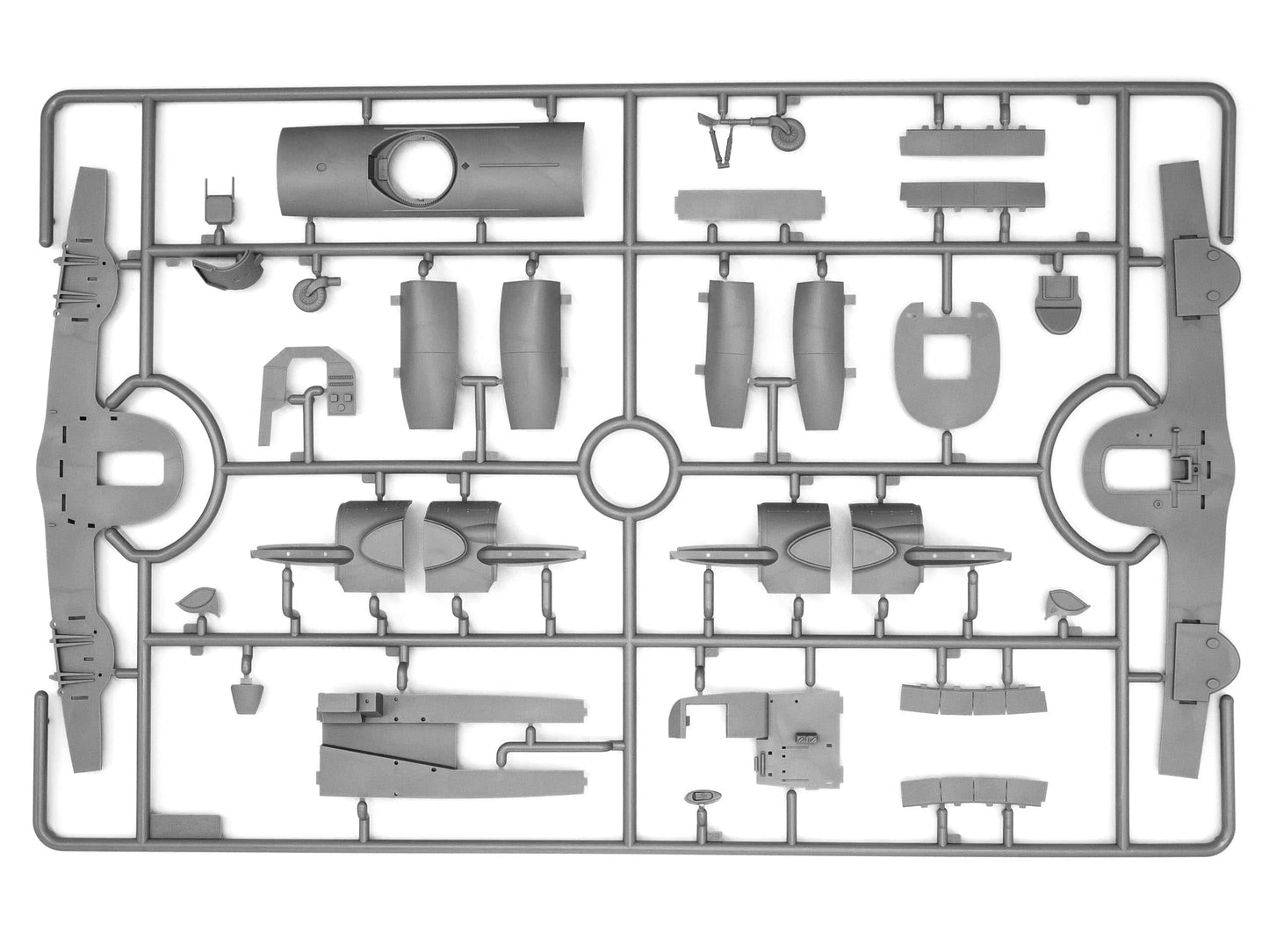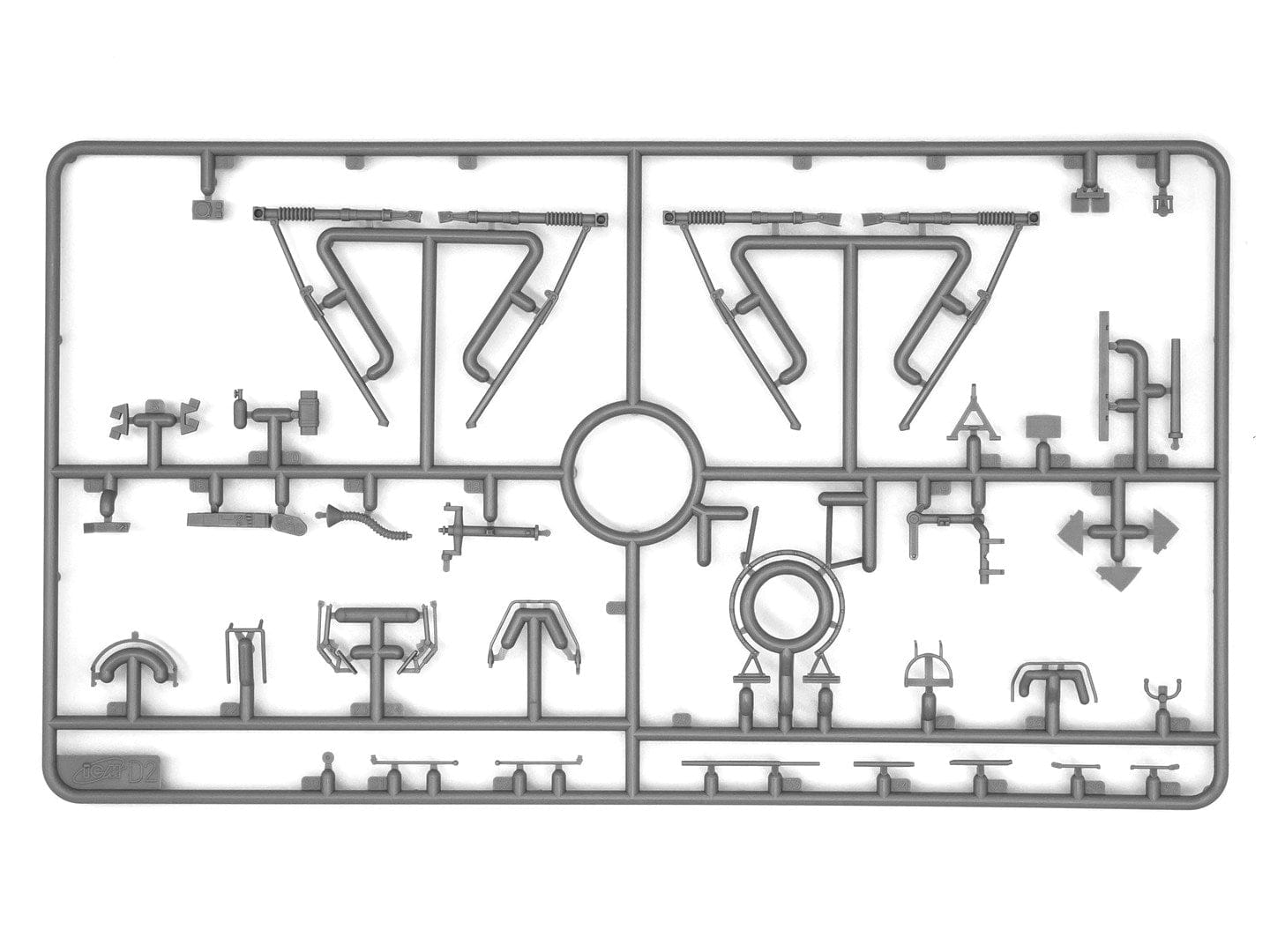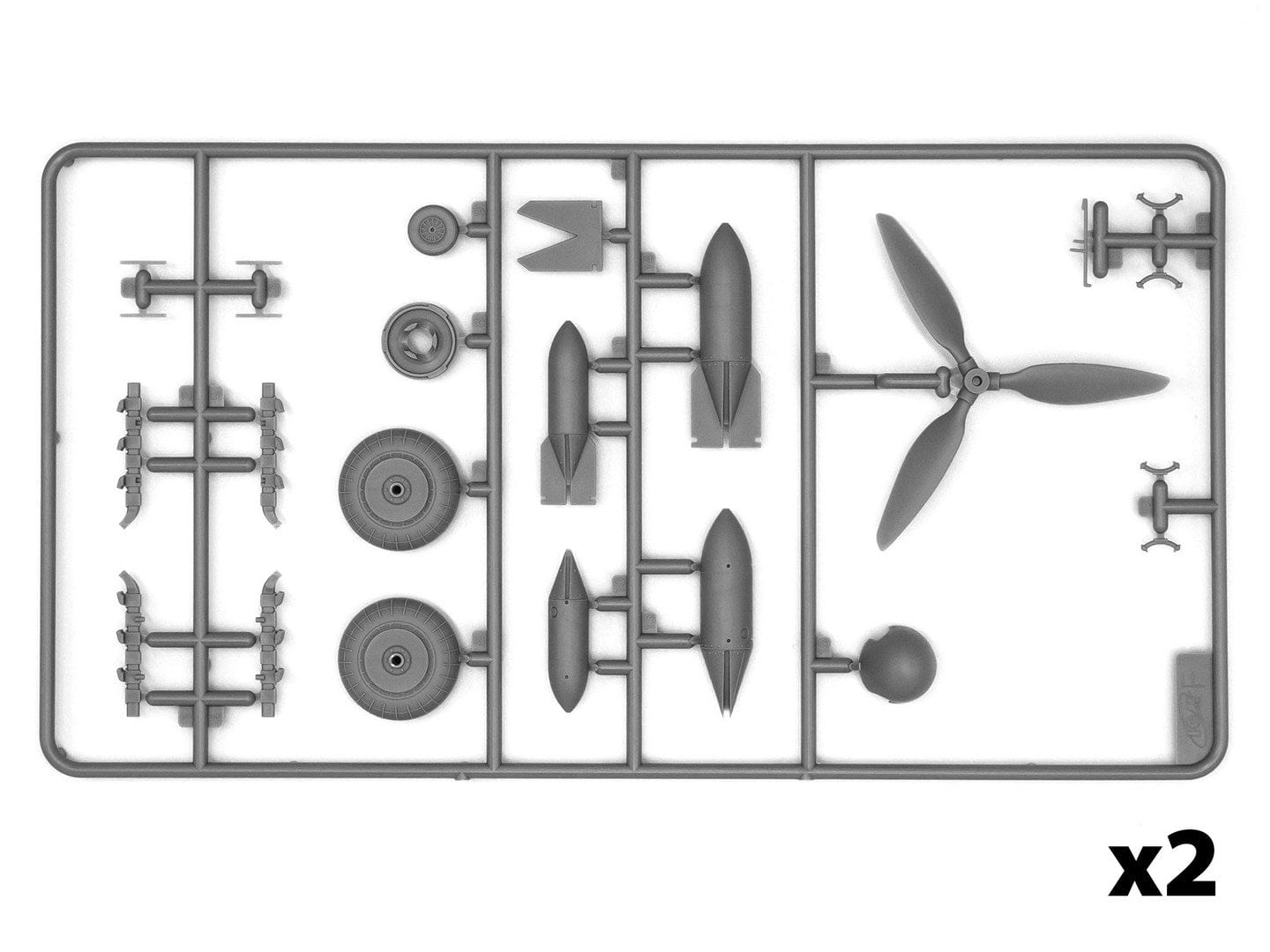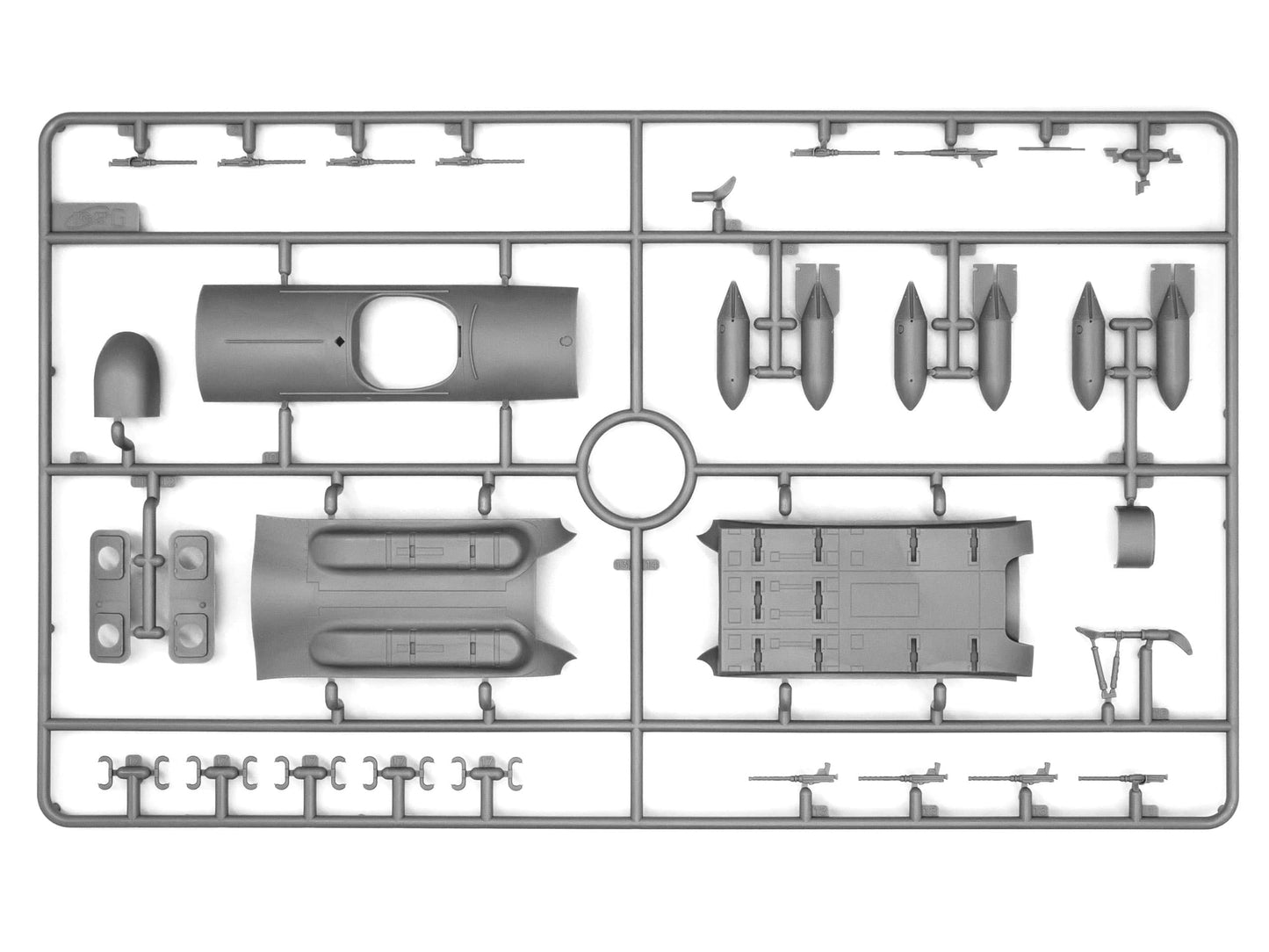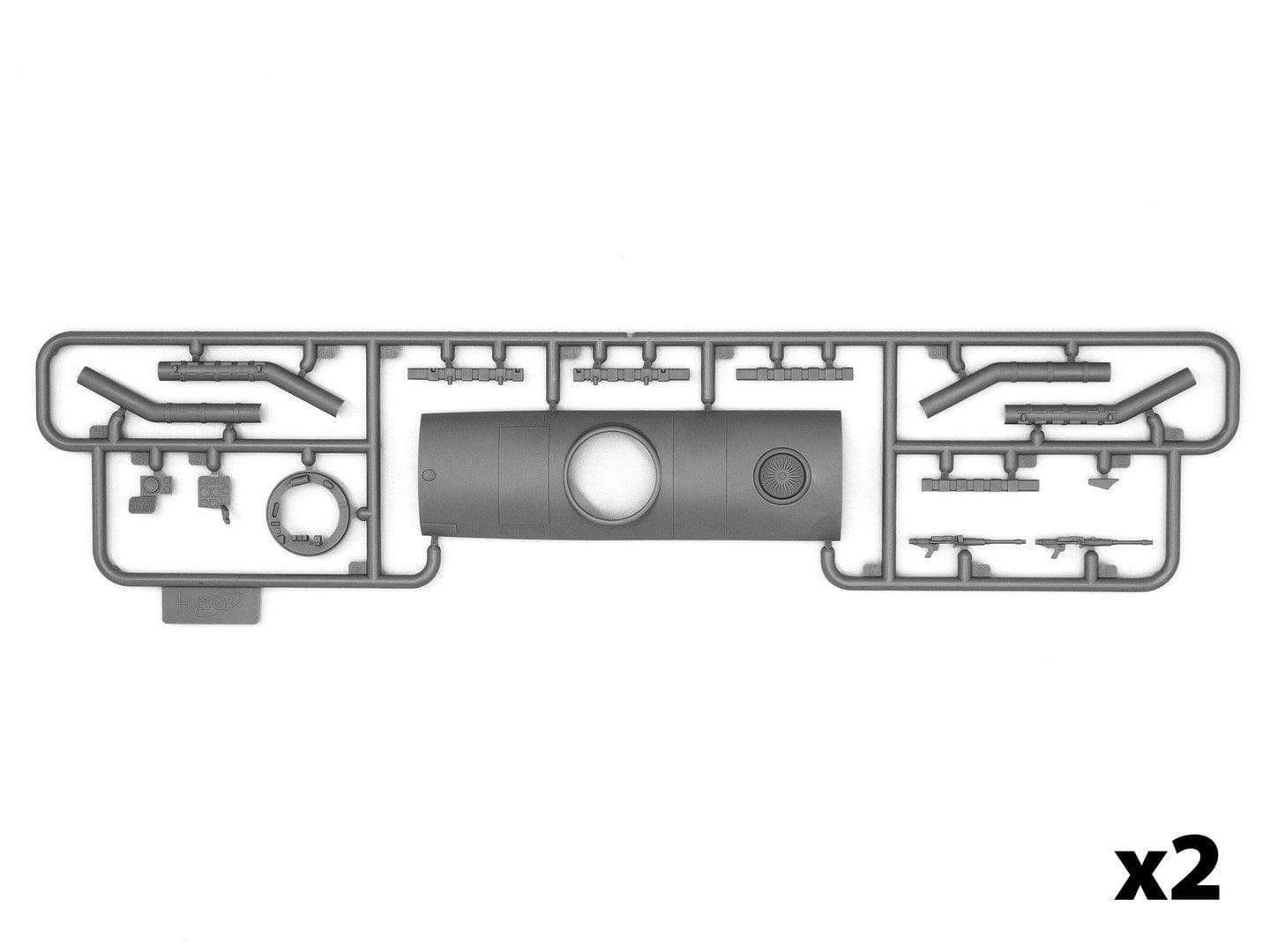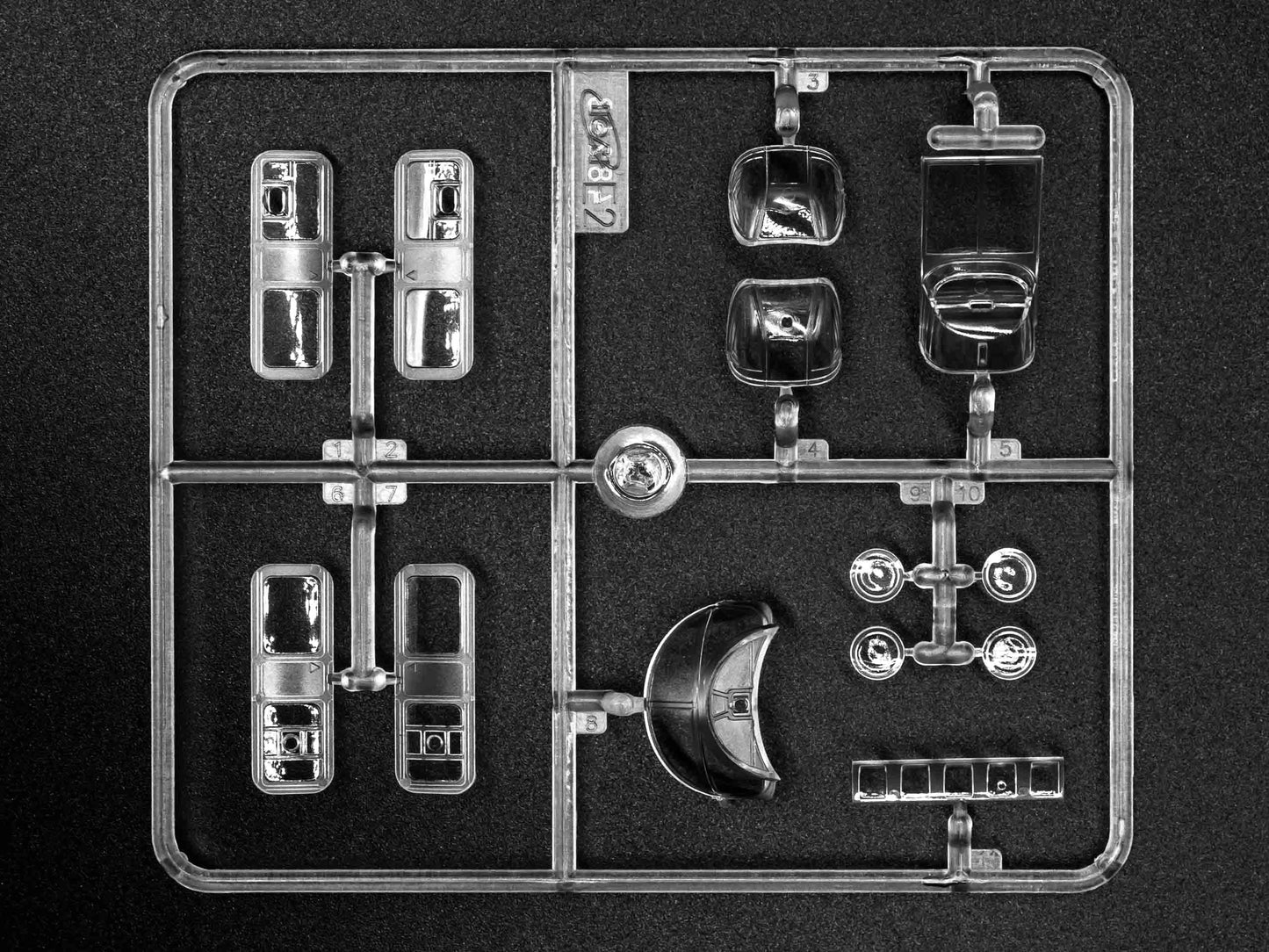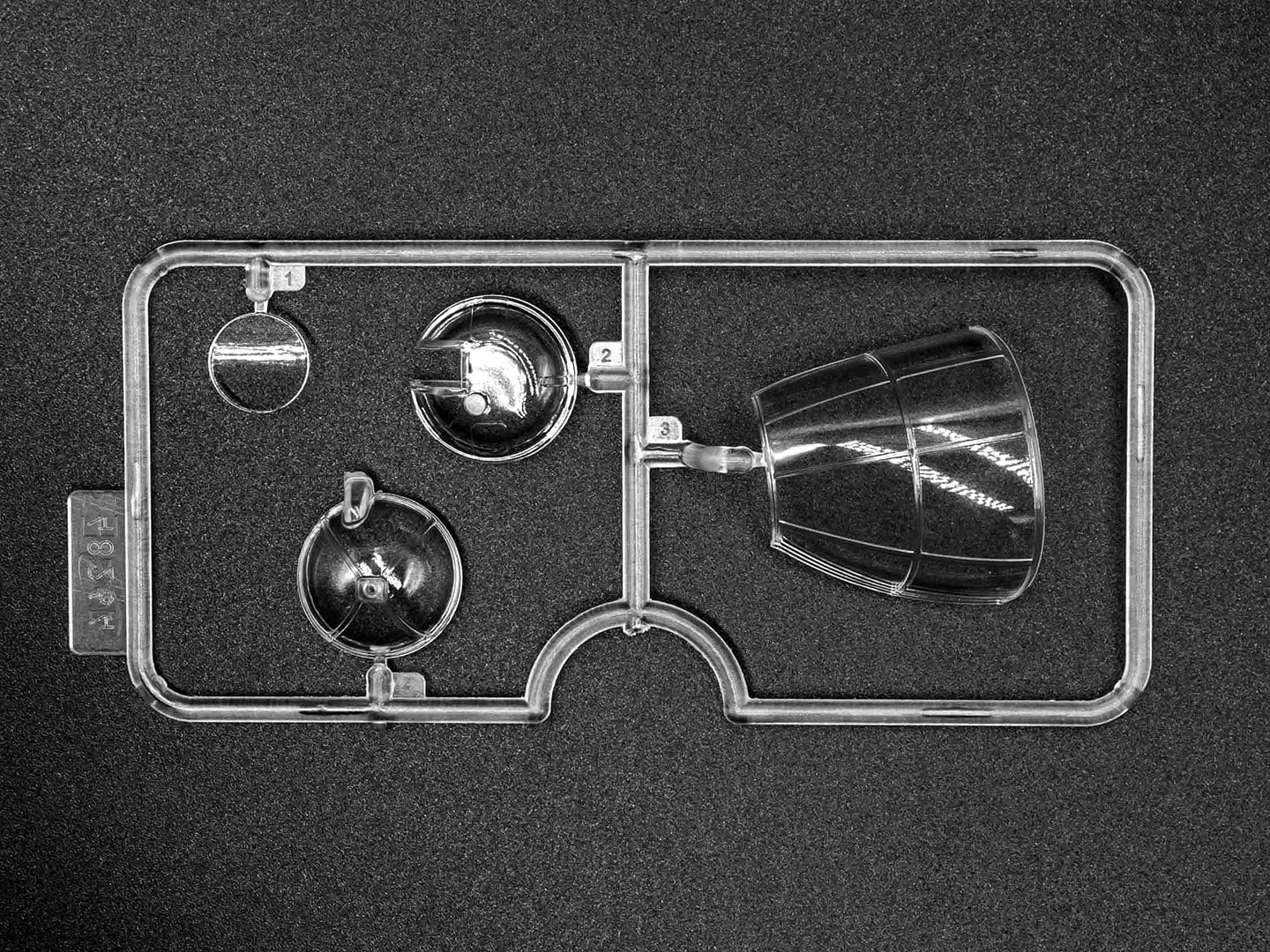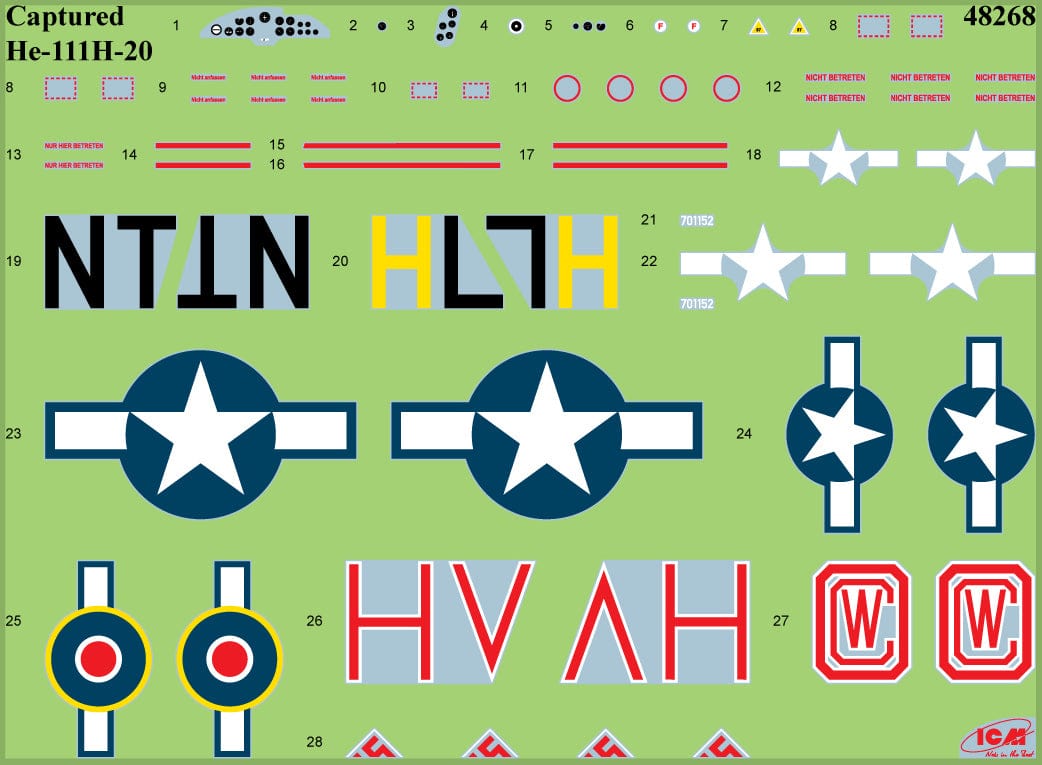This boxed set contains:
- 1 x Heinkel He 111 H-20 1/48 scale medium bomber aircraft
British Royal Air Force
United States Army Air Forces
One of the He 111H-20 aircraft has a remarkable history. Built as a transport variant of one of the Luftwaffe’s most widely produced bombers, it was manufactured in 1944 with factory number 701152. During the final days of World War II in Europe, American forces captured and transported it to Cherbourg. The pilots of the 56th Fighter Group USAAF, who were assigned the aircraft, painted it their unit’s signature deep purple color. By September 1945, when it was time to return to the USA, the American pilots faced leaving the aircraft behind. Unwilling to abandon it, the crew made a daring decision—without higher command’s approval, they flew their He 111 to the British airbase at North Weald, where bewildered British pilots discovered it on their airfield the following morning. This bold action ensured the aircraft’s preservation. It was subsequently featured at the German aircraft exhibition at RAE Farnborough, before finding its permanent home in 1978 at the Royal Air Force Museum in London, where it remains today.
This boxed set contains:
-
1*Heinkel He 111 H-20 1/48 scale medium bomber aircraft
One of the He 111H-20 aircraft has a remarkable history. Built as a transport variant of one of the Luftwaffe’s most widely produced bombers, it was manufactured in 1944 with factory number 701152. During the final days of World War II in Europe, American forces captured and transported it to Cherbourg. The pilots of the 56th Fighter Group USAAF, who were assigned the aircraft, painted it their unit’s signature deep purple color. By September 1945, when it was time to return to the USA, the American pilots faced leaving the aircraft behind. Unwilling to abandon it, the crew made a daring decision—without higher command’s approval, they flew their He 111 to the British airbase at North Weald, where bewildered British pilots discovered it on their airfield the following morning. This bold action ensured the aircraft’s preservation. It was subsequently featured at the German aircraft exhibition at RAE Farnborough, before finding its permanent home in 1978 at the Royal Air Force Museum in London, where it remains today.




